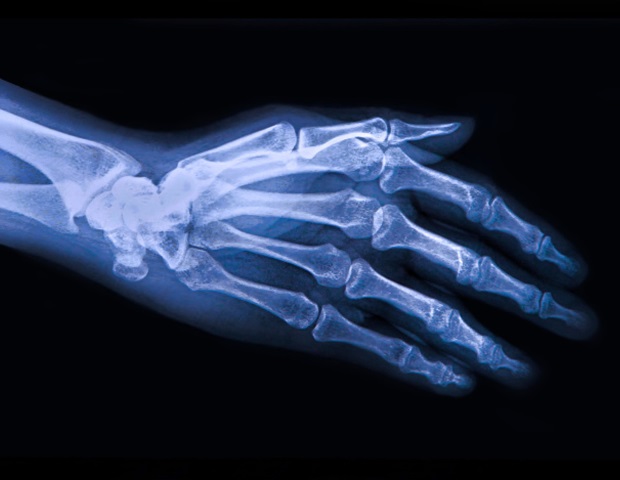Musculoskeletal circumstances-which encompass impairments of the joints, bones, or muscles-influence a lot more than 1.5 billion individuals about the planet. Like most overall health complications, catching these concerns early could probably reduce severe issues, but number of quantitative and aim assessments to assess musculoskeletal wellbeing are readily available.
There is a important want for cheap, scalable tools to objectively evaluate and observe adjustments in bodily functionality, specifically as the worldwide populace ages. Locating means to remotely examine musculoskeletal overall health could guide diagnoses, manual therapy conclusions, and likely make improvements to the good quality of existence of a great number of people.”
Melissa Boswell, Ph.D., Postdoctoral Fellow at Stanford University
To deal with this dilemma, Boswell and colleagues created an on the net instrument that can examine self-gathered, at-household films taken with a smartphone. The software, which was deployed in a nationwide analyze, was sensitive adequate to predict actual physical health (as evaluated employing a standardized study tool) and osteoarthritis of the knee or hip. Success of the review have been not long ago explained in npj Digital Drugs (a publication of Mother nature).
The tool is based mostly on the sit-to-stand test, an analysis that is fairly self-explanatory: starting off from a seated place with arms crossed, a participant stands up and sits back again down a full of 5 moments whilst getting timed. Slower periods could suggest lessened reduced entire body energy, or a condition that impacts the musculoskeletal system, or just getting older, described Boswell, noting that the examination by itself is not a specific measure of actual physical function. This is exactly where kinematic analyses (which consider movement) arrive into perform. By examining issues like the angles and accelerations of unique areas of the human body through movement, additional definitive predictions of musculoskeletal health and fitness can be created.
Here’s how their tool works-employing a smartphone, somebody takes a video of the participant executing the sit-to-stand test, which is then uploaded into the app. The tool combines an open-resource algorithm for estimation of the participant’s pose with custom-made algorithms that calculate the time it requires for the participant to total the test along with kinematic aspects, these kinds of as joint angles during movement. Members also acquire a study to input demographic details and complete a questionnaire to consider aspects like tiredness, discomfort, psychological distress, and general bodily purpose. Contributors were being also asked if they experienced a previous medical analysis of osteoarthritis.
Simply because the research was obtainable to numerous people today, participation was markedly bigger than conventional biomechanics trials. “Investigations of human movement have typically been minimal to biomechanics laboratories equipped with high priced and specialized products,” Boswell stated. In their nationwide examine, Boswell and colleagues included knowledge from 405 individuals from 35 U.S. states, with men and women distributing videos in just in excess of a month’s time. “Our analyze had a lot more than 35 moments the median amount of topics in comparison with regular biomechanics experiments,” she mentioned. The age of the individuals ranged from 18 to 96 yrs, with an regular age of 37.5 decades.
Identical to past laboratory and medical assessments, the scientists located that a larger most trunk angle-that is, leaning additional forward-when standing could forecast osteoarthritis, even when controlling for a range of things, these kinds of as age, intercourse, or entire body mass index (BMI). Like previous biomechanical scientific studies, the device observed that for a longer period periods to complete the sit-to-stand test were being linked with a lessen physical well being rating, a higher BMI, and more mature age. These outcomes suggest that at-home smartphone-primarily based assessments may possibly be feasible for upcoming biomechanical research.
Mainly because their trial experienced a diverse participant population, the scientists had been ready to examine how demographic things may be linked with biomechanical discrepancies. When they in comparison the two biggest ethnic groups in their examine, they observed that the 243 white participants experienced important variances in trunk angle all through the sit-to-stand exam in comparison with the 103 Asian contributors, even immediately after having other variables into account. “This obtaining signifies that we cannot think similarities across racial and ethnic groups and highlights the significance of a lot more numerous samples in biomechanical scientific tests,” reported Boswell. “These practical variances are likely because of to underlying components like mobility or toughness, or even wellness inequities, that weren’t captured in this study.”
The researchers also observed a biomechanical function (precisely, leaning forward a lot more quickly when standing) that was drastically connected with a increased psychological health score. “It is exciting to see probable associations among psychological overall health and how we transfer,” Boswell said. She pressured, nonetheless, that the relationships concerning biomechanical dissimilarities and race/ethnicity or psychological well being position observed in their study are largely speculation-creating and will involve stick to-up investigate.
“This study highlights that self-collected info can be utilized to assess physical operate and musculoskeletal wellbeing, letting sufferers to participate in a biomechanical research from the convenience of their own house,” claimed Moria Bittmann, Ph.D., a system director in the division of Discovery Science & Technologies at the National Institute of Biomedical Imaging and Bioengineering (NIBIB). “Studies like these provide more evidence that smartphone-dependent apps can assist aid decentralized medical trials and can empower persons to get an energetic position in their overall health.”
“New and enhanced equipment mastering instruments are consistently being produced to estimate human movement (and much much more), which have the likely to have a profound effects on well being treatment by mobile wellbeing checking,” mentioned senior examine author Scott Delp, Ph.D., a professor at Stanford University and director of the NIH-funded Mobilize Middle. “But basically creating new AI applications is not plenty of. To genuinely make an effects, we need to translate these new applications into the world, make them usable for the typical human being and for susceptible populations, and rigorously assess their means to give insights into crucial clinical measures.”
This review was supported by the Mobilize Heart, which is funded by a grant from NIBIB and the Eunice Kennedy Shriver Nationwide Institute of Child Well being and Human Growth (NICHD P41EB027060) and the Restore Centre, a Health-related Rehabilitation Investigate Source that is supported by NICHD and the Nationwide Institute of Neurological Disorders and Stroke (NINDS P2CHD101913). This examine also gained support from the Nationwide Science Foundation (DGE-1656518).
Source:
Journal reference:
Boswell, M. A., et al. (2023). Smartphone films of the sit-to-stand exam forecast osteoarthritis and wellbeing results in a nationwide research. Npj Electronic Drugs. doi.org/10.1038/s41746-023-00775-1.





More Stories
Durango church offers ambulatory medical equipment for lending – The Durango Herald
How Robotic Applications are Changing Medical Devices
Trends in digital health: Health apps as software medical devices